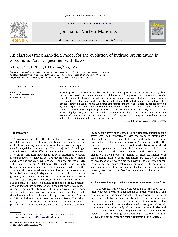摘要
An elastoplastic phase-field model, described in Part 1, was applied to bulk materials containing flaws such as sharp cracks and blunt notches. An additional set of long range order parameters, namely, stress-free strains for flaws, was introduced. The nucleation and growth of hydrides near a void or a crack were simulated by the proposed elastoplastic phase-field model. The effects of notch root radius, hydrogen concentration in solid solution, yield stress of the matrix and the level of externally applied stress on hydride morphology around flaws were studied. It is demonstrated that parameters such as the distribution of the tensile stress component perpendicular to the hydride platelet normal may be closely monitored during hydride growth near a flaw with or without externally applied stresses. Combined with a fracture criterion and real experimental data, the model is capable of predicting the rate and morphology of hydride precipitation, and crack initiation near flaws.
